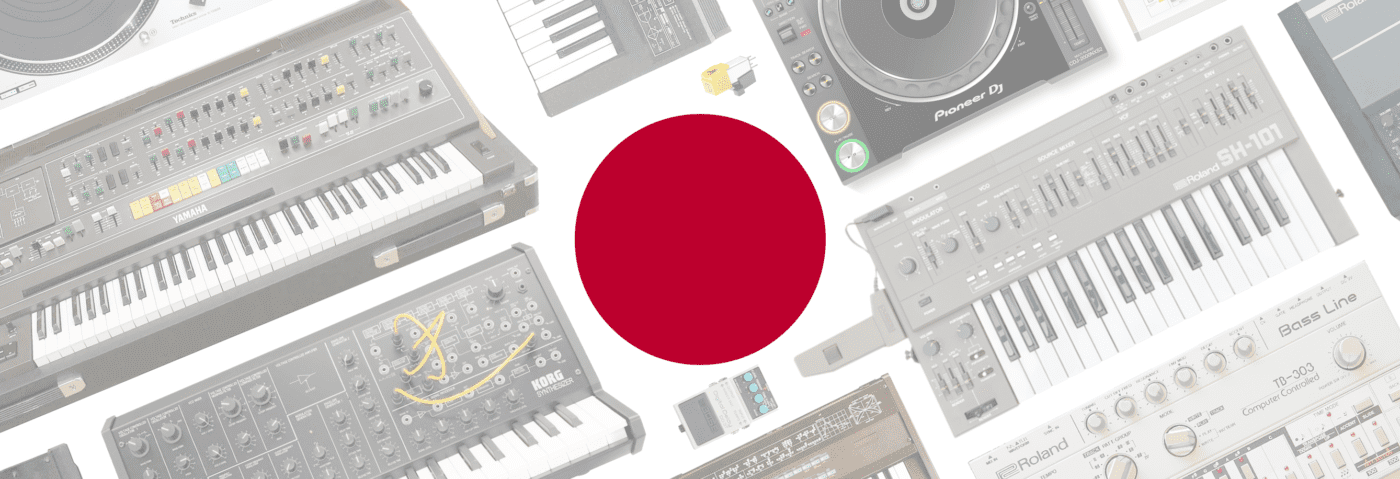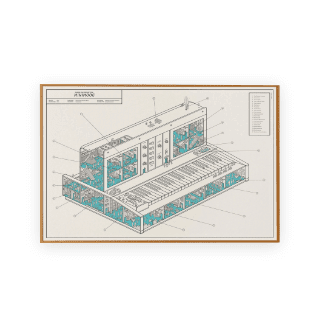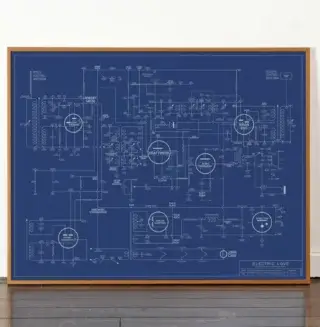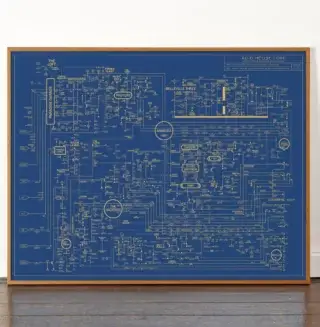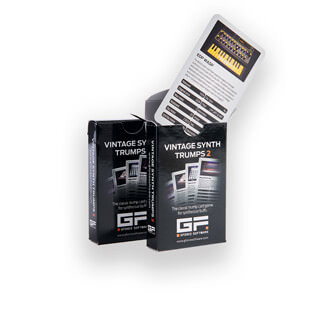There’s no denying that Japanese hardware – synthesizers, drum machines, and DJ gear – has exerted a huge influence on dance music. How did this island nation come to dominate music production and playback?
It was quite a phenomenon. There were a few decades – mostly in the ‘80s and ‘90s – where the entire chain of dance music production, from creation to playback, was monopolized by Japanese products. Sounds were created on Roland, Yamaha and Korg synthesizers and drum machines, played by DJs in clubs on Technics turntables with Audio-Technica cartridges, Pioneer DJ CDJs and mixers, and listened to by punters on Sony Walkmans and home stereo units. Japanese products were involved in almost every stage of the process and we barely even noticed.
How did Japan go from the butt of jokes – ‘Made in Japan’ used to be a pejorative, much like ‘Made in China’ is today – to the global leader of dance music electronics? To get to the bottom of this, we assembled a world-class group of experts, including Japanese engineers and a synthesizer documentarian and Japanologist, and asked them, “How did Japanese music technology come to dominate the dance music world?”
The Post-War Economic Miracle
Although the West had first become enamoured with Japan in the 1800s when the country opened to the world and Japonisme overturned traditional European artistic conventions, our story begins in the aftermath of the Second World War.
“Japan has a long history of artisanship and craftsmanship that fueled its shocking resurrection from total defeat in World War II,” Japanologist Matt Alt told us. His most recent book, Pure Invention, is about how Japanese pop culture made similar inroads into the West and beyond. “After it emerged as the world’s second-largest economy in the late ’60s, its newly rebuilt cities, filled with young people from a postwar baby boom, transformed into hothouses for consumer innovation.” With plenty of expendable income and a newly emerging middle class, the country’s manufacturers rose to meet demand. “Locals’ hunger for excitement and stimulation of all kinds fueled a kind of Darwinian competition,” Alt further explained, “that sharpened the products from creatives of all stripes, from illustrated manga and anime to consumer electronics to cutting-edge music like YMO and city pop. Transformative hits like the karaoke machine and the Walkman were honed for a discriminating urban Japanese audience before exploding abroad.”
This is the key here. As consumer Westerners, we may imagine Japan as existing to supply the world with products but export was a byproduct of a gangbusters domestic economy.
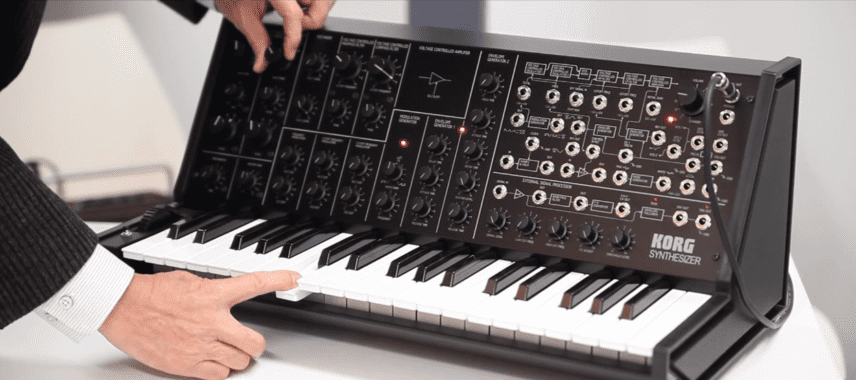
The same was true for musical instruments. Fumio Mieda, Auditor of Korg, started with the company in 1968 and went on to design some of the company’s greatest instruments, including the miniKORG 700, MS-10 and MS-20, and VC-10 vocoder. “Because of the existing groundwork of the electronics industry and the large-scale domestic demand for Western instruments,” Mieda explained, “after the end of the Second World War, Japan could start selling steel guitars, electric guitars, guitar amps, electric organs, drum machines, effect units, synthesizers, and electric pianos in rapid succession. Electronic instruments start with semiconductors and need every component. Also, diverse manufacturing and engineering technologies are needed, and knowledge of Western music is also important. So it can be used around the world, quality and price are important. Japan at this time could fulfil all of these conditions. Because we could anticipate demand, making electronic instruments wasn’t that difficult.”
Because of the existing manufacturing infrastructure, as well as a population excited about pop music trends, Japan was primed for a music instrument boom. There was another piece of the puzzle, however, ready to fall in.
The Japanese were able to produce affordable synthesizers for the first time. This meant that synths from Roland, Korg, Yamaha, Teisco, Kawai, etc. were often the first synths that young musicians were able to get their hands on.
Alex Ball, Director of Land Of The Rising Sound
Tatsuya ‘Tats‘ Takahashi, CEO of Korg Germany and designer of the Korg Minilogue, among many other instruments, laid it out for us. “The favourable exchange rate in the ’70s and ’80s was a kickstart in gaining a foothold in the global market.”
Kiyotaka Kakemizu, Brand Communications Specialist at Audio-Technica who has worked on DJ headphones and cartridges for the company, agreed. “It (is) the same reason as to why the Japanese car became popular worldwide. Back in the ’80s, Japan was (known as) the world’s factory, as some Southeast Asian countries are now, and we produced many good quality products for affordable prices and shipped them globally. I think music gear and DJ gear might have been the same case.”
Alex Ball, who made the documentary Land Of The Rising Sound about Roland and also uses Japanese instruments when composing music for soundtracks, concurred. “The Japanese were able to produce affordable synthesizers for the first time. This meant that synths from Roland, Korg, Yamaha, Teisco, Kawai, etc. were often the first synths that young musicians were able to get their hands on.”
Well-made local products – including electronic instruments like synthesizers and drum machines – could be exported overseas and sold at attractive prices – prices low enough that synthesizers were now in reach of regular people.
The stage was set for a dance music production takeover.
If It Ain’t Broke, Fix It
Japan has long been known for its penchant to take in ideas from outside and put them to its own use. This is as true for kanji, the writing system it borrowed from China, to tempura, which originally came from Portugal, to electronic equipment.
Japanese people seem to be better at improving existing things than inventing new things.
Kiyotaka Kakemizu, Audio-Technica
“Japanese people seem to be better at improving existing things than inventing new things,” said Audio-Technica’s Kakemizu. “In general, great products that Japanese people created were mostly based on technology that was invented in Western countries.” Just copying something wasn’t good enough. “Improving a thing to 90% perfect makes people satisfied already, but Japanese engineers tend to try making it 100% perfect even if it’s not cost-effective. I think attacking the last 10% improvement makes Japanese products fantastic. God is in the details.”

Koichi Mizumoto, Executive Officer, Technical Development Division at Roland, who has lead many product R&D projects on synthesizers and digital recorders, also attributes this to Japan’s success. “Japanese synthesizer manufacturers started as copies of (Western) instruments. The (Japanese) customers were highly niched then, but (companies) felt the need to expand the customers and aimed at the mass market to succeed as a business. Therefore, they set their own limits on cost and size and aimed to keep the form compact (for the time) while using ingenuity and making compromises within those limits. This met the needs of those who wanted to simplify the setup for touring and recording, and also reached wider, non-professional customers as well.”
Alex Ball put it like this: “Japanese companies didn’t make cheap knockoffs of other people’s gear. They piled their own ideas and imagination into their inventions.”
Better Business Model
Along with affordability and new ideas, Japanese instrument manufacturers such as Roland, Korg and Yamaha, and DJ gear companies like Audio-Technica, Technics, and Pioneer DJ, were able to parlay local business practices into global power.
Tats summed it up with one word: industrialisation. “It’s the same story as Toyota, Nintendo and Sony,” he explained. “Japan did not invent the automobile, gaming console or the cassette tape, but it took over the world with its industrialisation.”
Using business management systems like the holistic 7S Framework and Just-in-time manufacturing, developed at Toyota to reduce production and response time, companies could achieve massive economic growth.
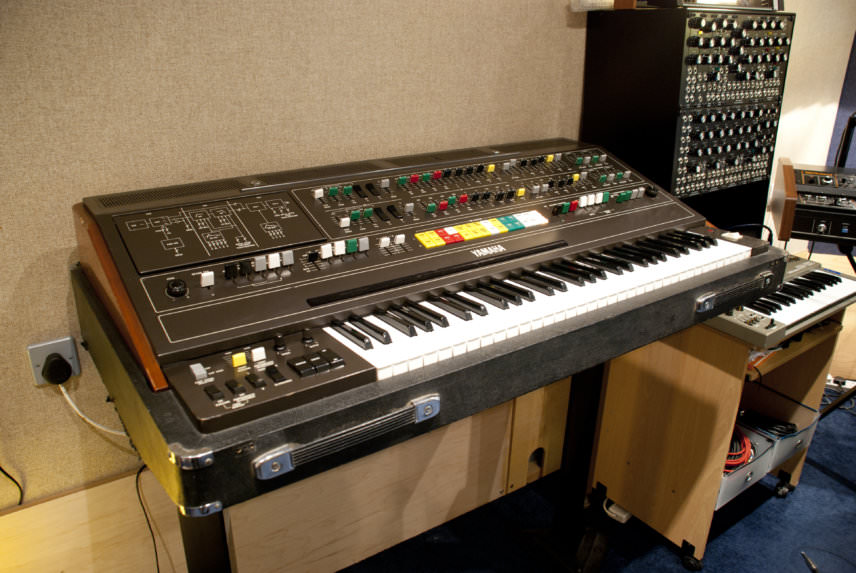
“See the pattern here – new products emerge from around the world in the ’60s and ’70s, then in the late ’70s through the ’80s Japan gains global share through effective industrialisation,” Tats explained. “Synthesizers were no exception. The ’60s and ’70s saw the EMS VCS3, Moog Minimoog, ARP Odyssey and Sequential Circuits Prophet 5, then the late ’70s to the ’80s were flooded with Japanese synths: CS-80, MS-20, TB-303, SH-101, the list goes on. I remember David Friend (ARP co-founder) talked about this when we were working on the Odyssey remake. ‘The features and price point of the Japanese competition were simply unmatchable.’ With the digital era came the likes of DX7 and M1 which sealed the fate of US brands. Moog, Sequential and ARP all went out of business in the ’80s.”
What A Difference
Of course, Japanese instruments and hardware wouldn’t have succeeded if all they had to offer was a low price point. They also sounded fantastic, with something to offer that was different from what the Americans and Europeans were doing at the time.
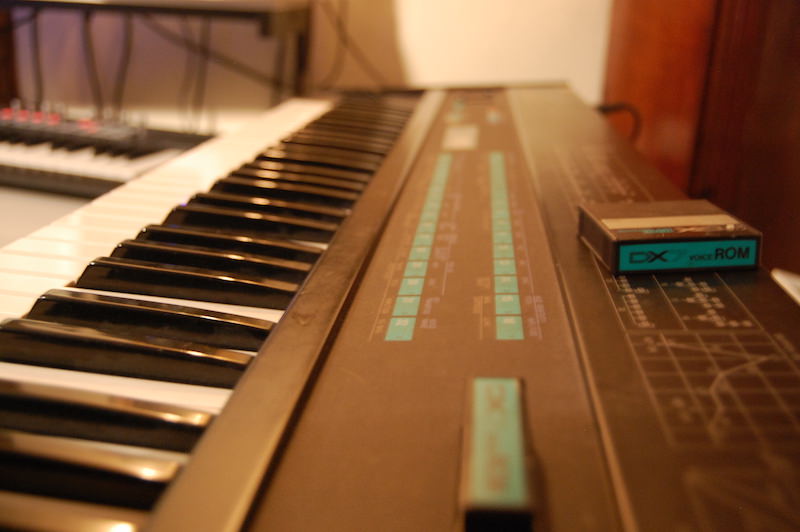
“There are numerous bits of Japanese kit from the past 50 years that is the only thing that sounds like it does,” said Ball. “Japanese gear just has its own personality.”
Along with sound quality, build quality was another major factor in popularity. When asked what Japanese gear has that’s different from American or European hardware, Audio-Technica’s Kiyotaku Kakemizu replied, “Maybe sturdiness or reliability? I think the differences between them are smaller than before, but that 10% extra from the engineers still makes a distinction.”
Fumio Mieda from Korg also noticed this. “I think it’s the inbuilt care and stable quality,” he said.
Designed For Impact
There’s no denying the impact that Japanese hardware has had on the dance music world. While the designers and companies may be shooting for impact (“Being a game changer is a brand vision of Roland,” said Koichi Mizumoto), in reality, it can be difficult to predict how the market will react to a new product.
No matter much we try to think of how an instrument will have influence when we plan and develop it, it doesn’t go as we planned.
Fumio Mieda, Korg
“No matter much we try to think of how an instrument will have influence when we plan and develop it,” said Fumio Mieda, “it doesn’t go as we planned. However, I think precisely because it doesn’t go as we designed, something new is discovered and a new road opens up.”
As an example, Mieda told us about the CX-3 and BX-3 organs that Korg released in the 1980s. “All of the distributors said, ‘We can’t sell organs now at the height of the popularity of synthesizers.’ Although there was this fierce opposition from distributors, there was a positive reaction from the marketplace that we didn’t imagine. After that, European and American companies also started announcing similar organs and there was a small organ boom.”
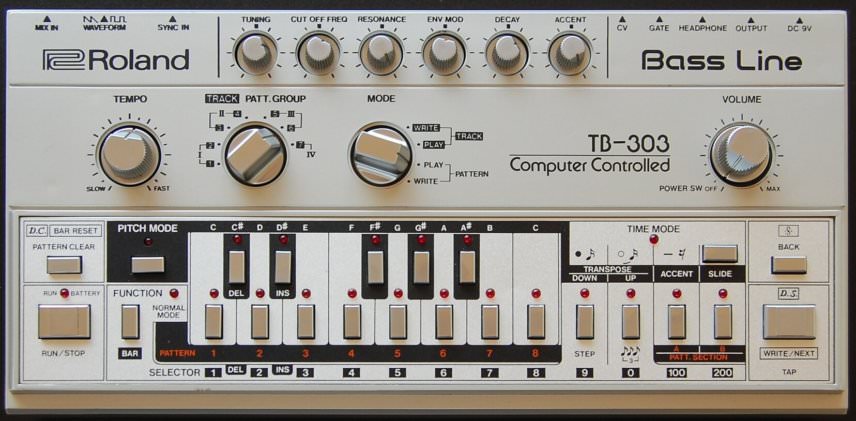
Famously, a number of Roland products exerted their influence on dance music culture years after release. The TB-303 bassline synthesizer is the best known. Originally designed as bass accompaniment for guitar players, it was rediscovered years later by Chicago music producers and formed the backbone of acid house. The TR-808 also failed to make a splash during its manufacturing run but slowly built in popularity on the second-hand market and continues to influence and define dance music genres.
“Sometimes these ways of packaging accidentally hit customers’ needs beyond the developers’ intentions,” said Koichi Mizumoto. “The TR-808 was used as an inexpensive rhythm machine for hip-hop, and the D-50 for background sounds for videogames, and then became the centrepieces of the culture.”
“There are numerous examples of Japanese instruments that ignited entire musical movements, or sounds or changed the direction of popular music entirely,” remarked Alex Ball. “Yamaha CS-80, DX7, Roland Space Echoes, CR-78, TR-808, TR-909, TB-303, Jupiters, Junos, D-50, Korg M1, etc., etc.”
This list includes DJ gear as well, such as the Technics SL-1200 and 1210 MK2, Pioneer DJ CDJs, Audio-Technica cartridges, plus mixers, headphones, and on and on.
The Future Is Global
Japan’s fire burned bright at the end of the 20th century but things have changed. Although still a major player in the world of musical instruments and DJ equipment, it’s becoming more difficult to identify something as purely ‘Japanese.’
When asked what differentiates Japanese gear from American or European products, Tats stated, “These days? Nothing. Each designer has their own thing. But there is nothing ‘Japanese’ about products made by Japanese brands.”
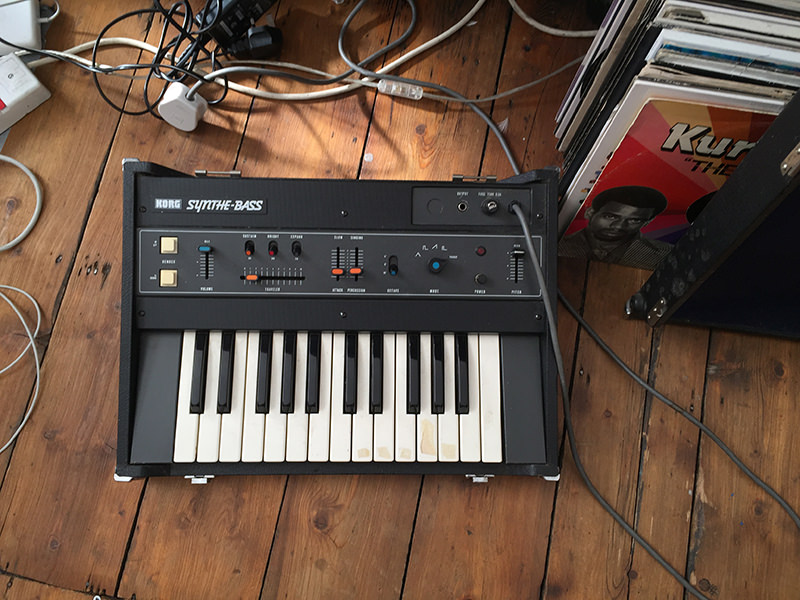
Fumio Mieda echoed the idea of designers having more impact than countries on modern gear. “As recent products have become digitized, for any country, performance and variation in quality have decreased. Now, I’ve come to think that it’s not about the difference between countries, but the difference in designers and manufacturer individuality.”
The future, it seems, is global. “Development, procurement of parts, and production are divided at a global scale,” Mieda said. “The benefits of one country covering everything have faded away. Japan’s development, manufacturing and sales have generally declined. These days, I look forward to small, emerging manufacturers from Europe and America announcing unique products.”
Japan’s place at the top of the consumer product food chain may have slipped but, thanks to its powerful legacy, the country still exerts an outsize influence on the production and playback of dance music.
